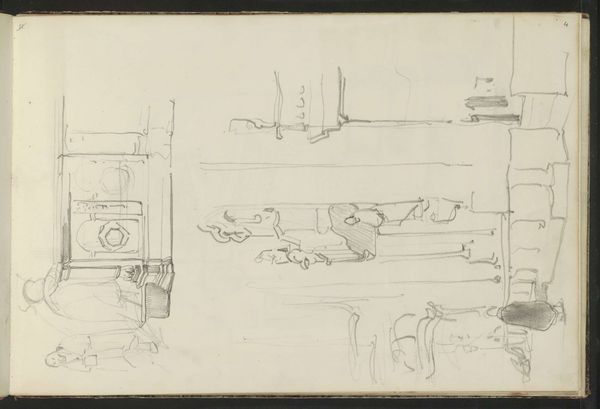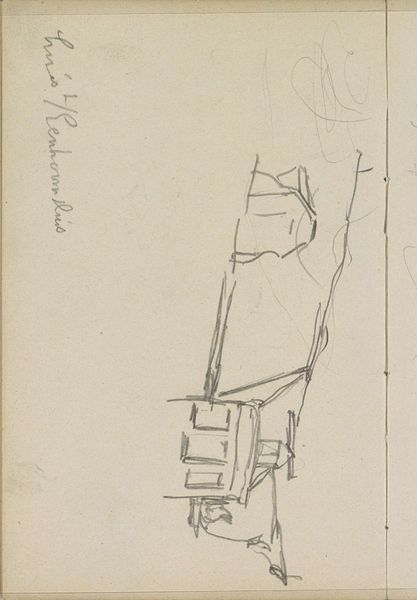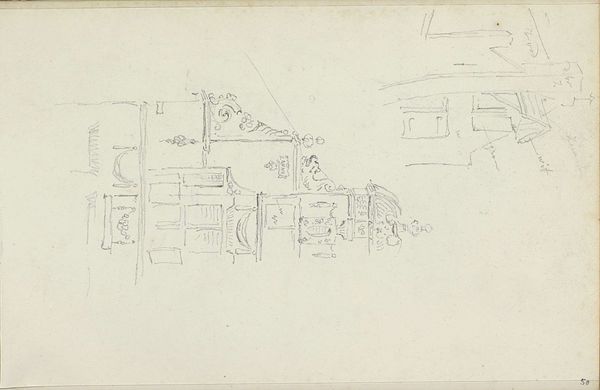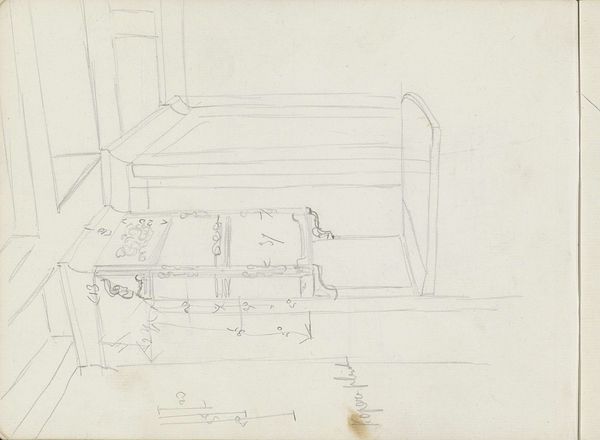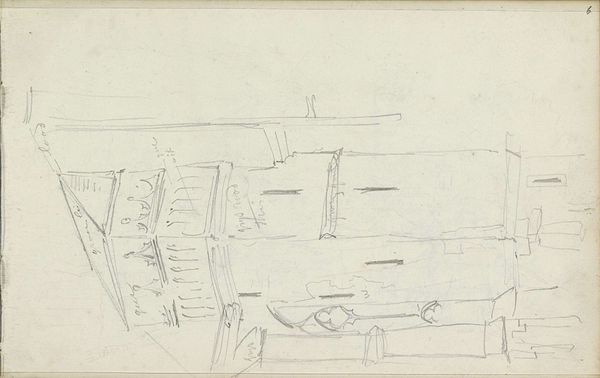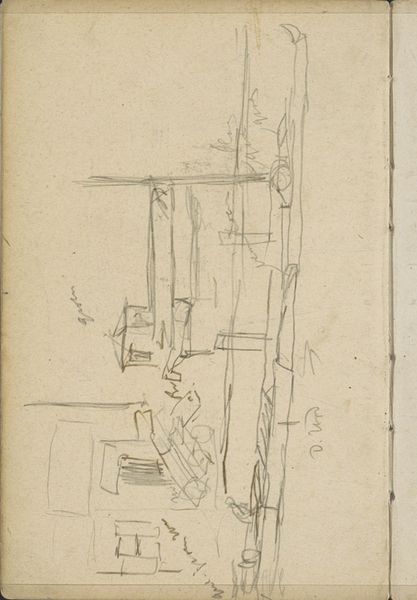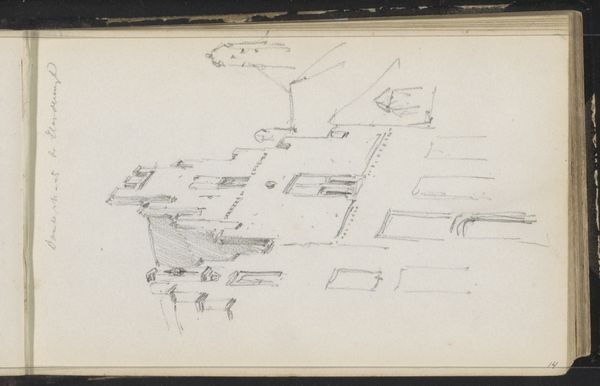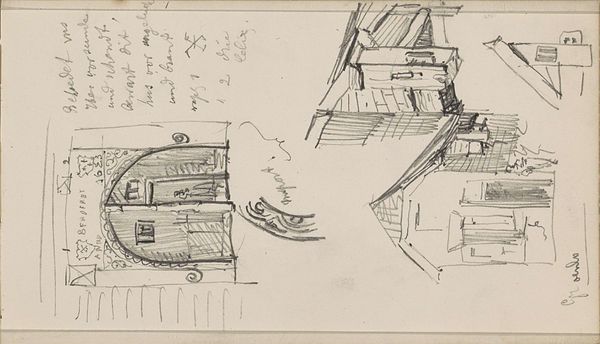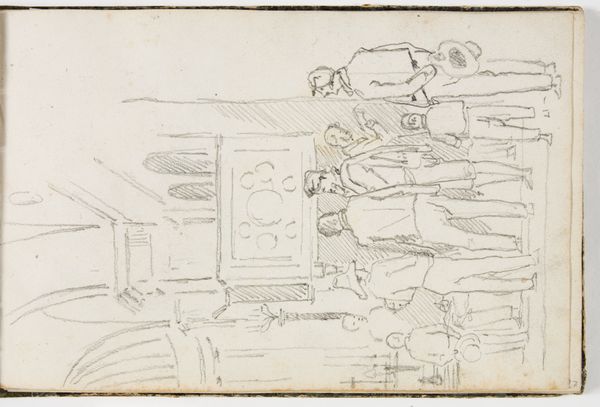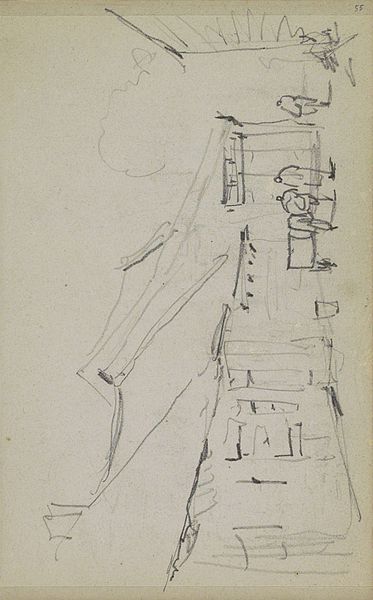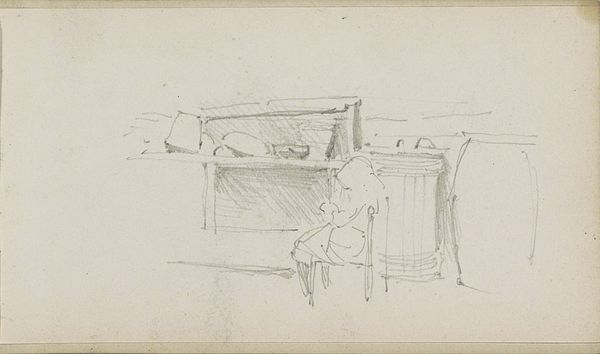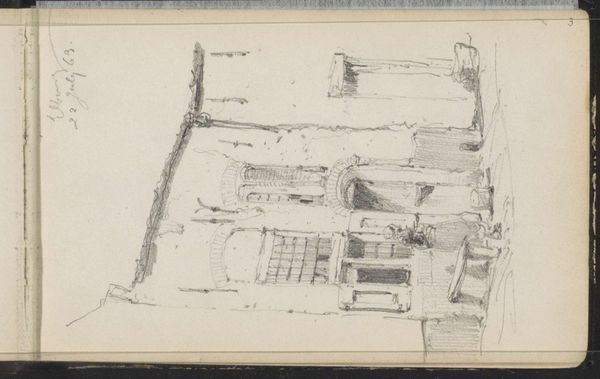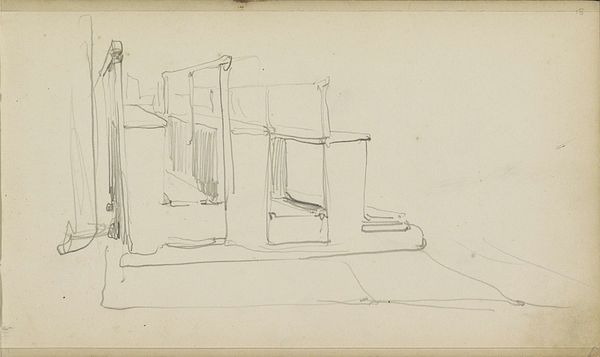
drawing, pencil, architecture
#
architectural sketch
#
drawing
#
quirky sketch
#
sketch book
#
landscape
#
personal sketchbook
#
idea generation sketch
#
sketchwork
#
sketch
#
pen-ink sketch
#
pencil
#
sketchbook drawing
#
cityscape
#
storyboard and sketchbook work
#
architecture
#
initial sketch
Copyright: Rijks Museum: Open Domain
Editor: This is Isaac Gosschalk’s “Pand met een trapgevel te Zaltbommel,” a pencil drawing made sometime between 1866 and 1868. It's a quick sketch, almost like a doodle, but it captures the stepped gable of a building. What strikes me is how casual it seems. What do you see in this piece? Curator: The immediacy of this sketch is precisely where its power lies. Notice how Gosschalk hasn’t just documented a façade. He has also included details above and to the side. What do these choices tell you about architectural depictions? Editor: Perhaps he’s interested in recording the textures and patterns of the building's surface in addition to the basic shape? It feels very much like he is exploring an idea. Curator: Exactly! Beyond surface appearances, Gosschalk may have been attracted by the history embedded in this architectural form, those stepped gables as a proud assertion of Dutch identity. They echo a time of prosperity, a time when merchant houses displayed wealth and status, something many wished to preserve. Editor: So the drawing, even in its simplicity, speaks to cultural pride and maybe even nostalgia for a bygone era? It makes you wonder what was changing then to inspire such sentiments. Curator: Indeed. The image carries a cultural memory. It becomes more than just a building; it’s a symbol of place, time, and perhaps even resistance to change. Editor: It’s amazing how much can be read into a simple sketch. I'll definitely look at architectural drawings differently from now on! Curator: I think this act of witnessing the past and present is vital and why we feel attracted to Gosschalk's simple marks that have persisted across time.
Comments
No comments
Be the first to comment and join the conversation on the ultimate creative platform.
